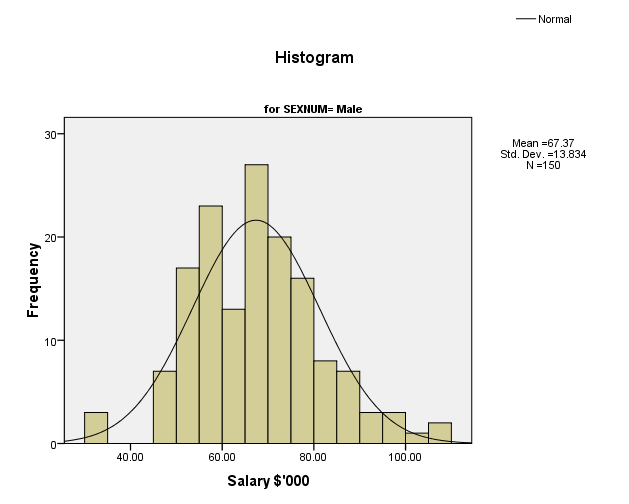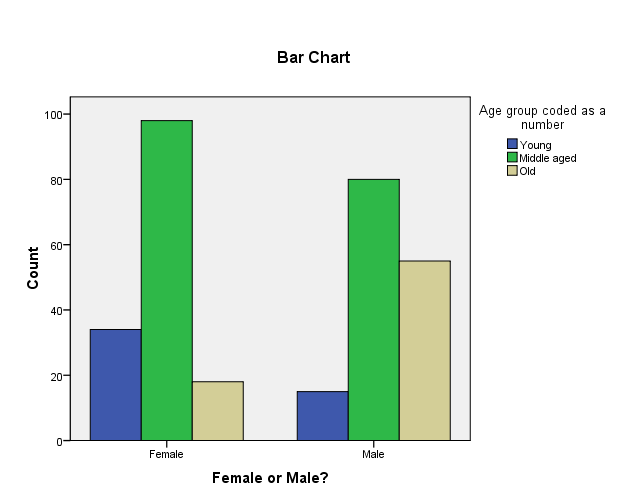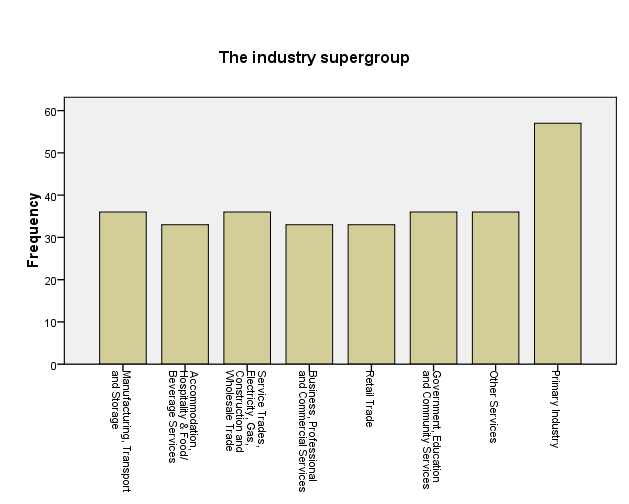Salaries for females and males
The average salary for Victorian workers, regardless of gender, is $62,890. On average, male workers in the Victorian workforce have a salary of $67,370 whereas the average salary for female workers is slightly lower than that of males as it is $58,410. Male workers are highest paid with the highest salary being $106,200 as compared to $101,260 for the highest-paid female workers. Moreover, the female worker’s group has the least paid workers with the lowest salary being $19,030 compared to the least paid male workers ($31,160).
Table 1: A Summary of Salaries Overall ($’000) in the Victorian Workforce.
Table 2: Salaries Overall ($’000) for Males and Females in the Victorian Workforce.


A summary of the proportion of females and males in each age-group
Most of the female workers are middle-aged (98) whereas old female workers are the least (18). Young female workers (34) are almost twice the old female workers. Middle-aged male workers also constitute the largest proportion of male workers (80) whereas young male workers are the least (15) among male workers in Victoria. Old male workers constitute a substantial number (55).
Table 3: A 2×2 Cross Tabulation of the Proportion of Females and Males in each Age-group (Young, Middle Aged and Old).

Table 4: A Statistically Significant Chi-Square Statistic for Male and Female Workers in Each Age Group.
It is, therefore, notable that substantial differences exist in terms of gender composition among the different age groups. In particular, there are more female workers among the young and middle age groups whereas old aged male workers are three times the number of females in the same age group.
Industry group representing the largest sample proportion
Regarding workforce distribution among various industries, it is evident that the primary industry has the largest proportion of workers (19%). The second-largest proportion of workers (12%) is absorbed in other industries except for the Accommodation, Hospitality & Food/Beverage Services, Retail Trade and Business, Professional and Commercial Services, each absorbing 11% of the workforce.
Table 5: Summaries of the Different Proportions of the Various Industry Groups Represented Victorian Workforce.

Table: 6: The Proportion of Male and Female Workers in each Industry Group.
Table 7: Chi-Square Statistic showing that the Differences in Gender Composition in Industry Groups are not statistically Significant.
In the Primary Industry, which has the largest proportion of the workforce, there are slightly more male workers (30) than female workers (27). This difference is very small.
What proportion of the workforce do females account for overall, as well as in both city and country locations?
The overall Victorian workforce has an equal proportion of the male and female workforce (males 150, females 150). Differences however emerge when the location of the workforce is put into consideration. In this regard, there are more female workers in the country (99) as compared to those working in the city (51). On the contrary, most of the male workers are located in the city (82) as compared to those in the countryside (68).
Table 8: Proportion of Overall Male and Female Workers in the Victorian Workforce.
Table 9: Proportion of Male and Female Workers based on whether they are Located in the City or the Countryside.
Table 10: A statistically Significant Chi-Square for male and Female Workforce as Located in the City and the Country.
Females’ salary and other numerical variables
Having more improvement courses translate to higher salaries among female workers. Female workers who have done three improvement courses have a higher salary on average ($88,910) as compared to those who have done one improvement course ($70,730) or those who have not done any improvement course ($49,690). Female workers who have either two children or none earn almost the same salary on average ($56,910 and 56,950 respectively).
However, the average salary for women with one child is lower ($51,420). The salary scale increases as the number of children a woman has increased, with females with five children earning the most ($82,400). Exceeding five children, however, seem to be related to a decrease in salary ($75,340 from $82,400 for females with five children). Single female workers earn slightly higher ($59,160) than their married counterparts ($57,400).
The higher the number of years women have had in an industry does not necessarily translate to a higher salary. For instance, while female workers with 9 years of experience have an average salary of $94,250, the average salary for those with 33 years of experience is $71,400.